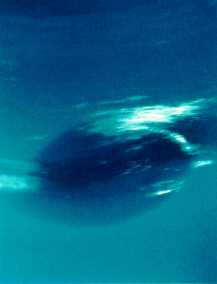Neptune's Web
These are links to other great web sites about Neptune. But beware: you don't want to get caught in Neptune's Web! Don't stay away from Windows to the Universe for long!

 NASA's Neptune Page
NASA's Neptune Page
 Neptune A simple page with images and animations.
Neptune A simple page with images and animations.
 Neptune's Ring System Everything you always wanted to know about Neptune's Rings.
Neptune's Ring System Everything you always wanted to know about Neptune's Rings.
 Nine Planets: Neptune
Nine Planets: Neptune
 NSSDC Neptune Photo Gallery
NSSDC Neptune Photo Gallery
 StarDate Online: Neptune
StarDate Online: Neptune
 Voyager Home Page
Voyager Home Page
You might also be interested in:

What types of instructional experiences help K-8 students learn science with understanding? What do science educators teachers, teacher leaders, science specialists, professional development staff, curriculum designers, school administrators need to know to create and support such experiences?
...more
Neptune has // Call the moon count function defined in the document head print_moon_count('neptune'); moons. It also has rings, but its rings are different from Saturn's. Neptune's largest moon is named
...more
The Giant planets do not have the same kind of layers inside that the Earth-like planets do. Their evolution was quite different than that of the Earth-like planets, and they have much more gas and ice
...more
The South Pole of the planet Neptune is a bit strange. Triton, Neptune's largest moon, also has interesting features at its poles. Neptune is tilted on its axis by about 28°. That isn't so strange... Earth
...more
The atmosphere of Neptune is very similar to that of Uranus, and unlike that of Saturn and Jupiter. On Jupiter and Saturn, the atmosphere is mostly composed of the simple molecules hydrogen and helium.
...more
There are four ideas for the origin of a planetary atmosphere. Those four ideas are: 1. that the planet-elements of which a planet was made released the atmosphere, 2. that the atmosphere was drawn to
...more
Unlike Jupiter's Great Red Spot, the Great Dark Spot of Neptune is thought to be a hole, similar to the hole in the ozone layer on Earth, in the methane cloud deck of Neptune. The white clouds shown in
...more
On this scale you can see that the "rocky" materials such as Calcium, Magnesium, Iron, Nickel, and Lead, that the terrestrial planets are made of can condense out of a very hot nebula, but ice will not
...more

 Neptune A simple page with images and animations.
Neptune A simple page with images and animations. Neptune's Ring System Everything you always wanted to know about Neptune's Rings.
Neptune's Ring System Everything you always wanted to know about Neptune's Rings.














